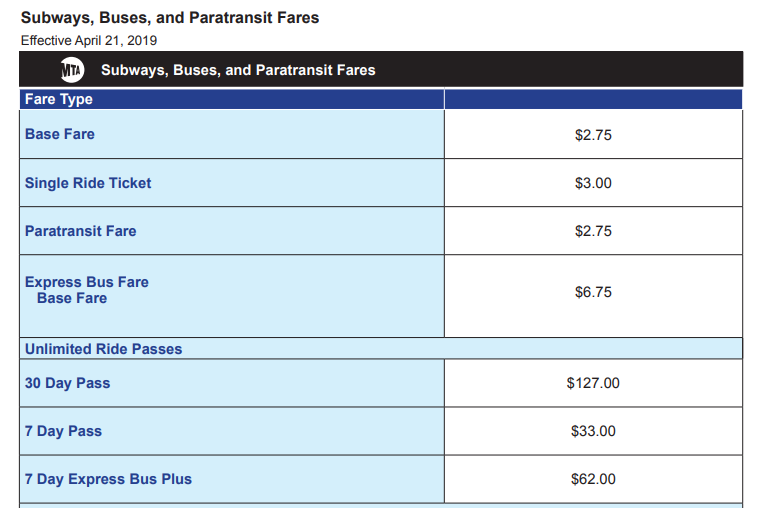Here’s How to Choose the Best Metrocard For Your Commute
/The new fares approved by the MTA board will go into effect on April 21. Image via the MTA.
By Jonathan Sperling
Do you want to add value or add time?
You may have faced this dilemma when refilling your Metrocard: Is it worth it to shell out for an unlimited-ride MetroCard or just pay per ride?
The MTA’s online MetroCard Calculator has answered those questions for commuters since its release in 2015. But the calculator rates will soon be as outdated as subway token.
On Feb. 27, the MTA board voted to increase the cost of unlimited ride MetroCards from $121 to $127 for a 30-day unlimited card and from $32 to $33 for a 7-day unlimited card. The MTA will also do away with pay-per-ride bonuses that add a few extra bucks to you card when you pay for more than one or two rides.
The MetroCard Calculator currently takes into account the soon-to-be-nixed 5 percent bonus given to riders when they add add $5.50 or more to their MetroCard, as well as the soon-to-be-outdated unlimited MetroCard fares, which will officially increase on April 21.
The calculator, as well as other sections of the MTA website, advise customers to purchase a pay-per-ride MetroCard if they ride the subway or local bus fewer than 13 times per week or 47 times per month. Any amount of rides over that warrants an unlimited ride MetroCard, according the MTA.
So what kind of card is correct when fares increase on April 21?
According to our math, an unlimited ride MetroCard will still be worth the $33 if you ride the subway or bus more than 12 times per week. But if you’re riding the subway and bus more than 12 times per week every week, then go with the $127 30-day card.
The 30-day unlimited card is worth the price if you take the subway or local bus more than 46 times per month. If you plan on taking fewer rides than that, you’re better off with a pay-per-ride card.
The $127 30-day card equates to about $4.23 per day. The $33 7-day card equates to about $4.71 per day. That, of course, makes the monthly card a better bet for people taking the subway most days of the month.
The MTA did not yet respond to the Eagle’s question as to whether or not the MetroCard Calculator will be updated ahead of the fare hikes.
Regardless of the cost-cutting measures, the MTA said state legislators must include congestion pricing in this year’s state budget, or the authority will be required to raise fares by nearly 30 percent, according to the agency.
Transit advocates who spoke to the Eagle last week seem to agree.
“The pressure is really on the legislature to really step and pass congestion pricing and modernize the subway,” Danny Pearlstein, a spokesperson for Riders Alliance told the Eagle. “In order to build the 21st Century accessible subway that commuters deserve, the pressure is really on the legislature. It needs to deliver, and do its job by passing congestion pricing.
Jaqi Cohen, a campaign coordinator with the Straphangers Campaign, told the Eagle that the MTA board’s recent cost-cutting initiatives are “moving things in the right direction, but I’m not sure we’re going to have this sort of overhaul we need without new funding to fund Fast Forward,’ referring to the MTA’s investment plan to modernize the subway via increasing capacity and accessibility.
“We are calling for congestion pricing to be included in this year’s state budget. What we do know is a tremendous amount of money is necessary to modernize the subway system,” Cohen continued.




